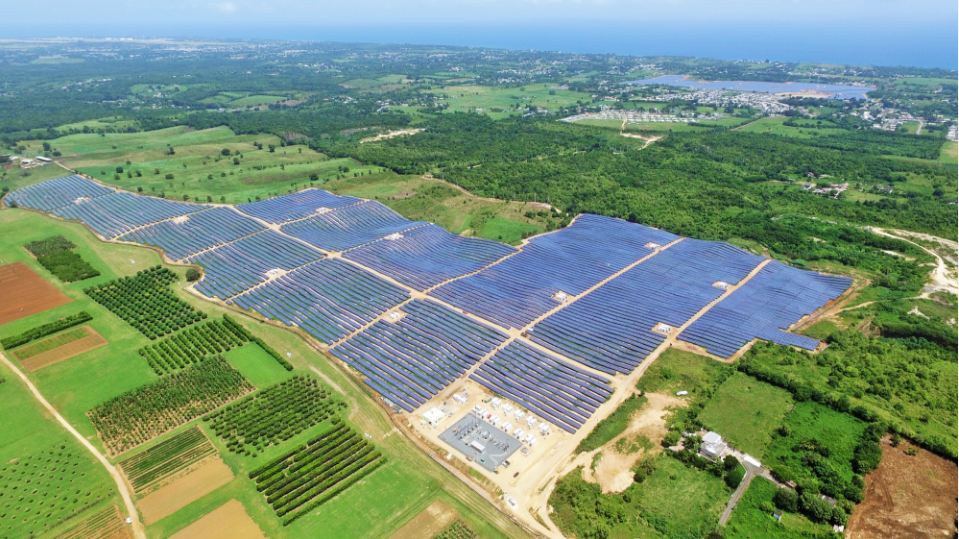The solar industry’s commitment to helping Puerto Rico rebuild its electrical grid grows with each passing day. With headline-grabbing U.S. solar companies like Sunnova, sonnen and Tesla stepping up, along with countless unrecognized installers and utilities pitching in, the U.S. territory seems headed toward a future grid built on the strong, resilient bones of solar electricity.
A cloud, however, looms on the horizon and could threaten to block out that solar-powered future, in the form of the Section 201 trade case currently pending before the U.S. International Trade Commission (USITC), at least according to the Puerto Rican Senate Minority Leader Eduardo Bhatia.
Bhatia sent a letter last week to the commission expressing his concerns about the future of his island’s electric grid if severe penalties are imposed.
Bhatia, who has served in various posts within the Puerto Rican government for 21 years, including Senate President, wrote an impassioned plea to the USITC, saying severe tariffs would inhibit his devastated island from effectively rebuilding its grid in the most efficient, effective way possible.
“Hurricane Maria destroyed my homeland, leaving us virtually 100% without power,” Bhatia wrote. “The entire grid was destroyed. From this devastation, Puerto Rico has an opportunity to rebuild with clean energy resources like solar.”
Bhatia believes the tariffs requested by Suniva and SolarWorld, the two petitioners in the case, would so increase the cost of modules that rebuilding Puerto Rico’s electricity infrastructure with solar would become uneconomical for mainland U.S. companies.
He also asked the USITC take the affects on the people of the territory into consideration, saying severe tariffs “could jeopardize the potential for millions of dollars in investment in communities across Puerto Rico.”
“Our island should be embracing this abundant, low-cost energy source,” he added. “Embracing solar would also create good quality jobs for people and communities that desperately need them.”
The Senator’s history with Puerto Rico’s energy sector could add extra weight to his words. Bhatia created the island’s first ever energy committee, passed comprehensive energy-reform legislation and created the Puerto Rican Energy Commission, which functions as the territory’s public utilities commission.
It also regulates the Puerto Rico Electric Power Authority’s (PREPA) compliance with the island’s 2010 renewable portfolio standard, which current requires the Authority to purchase 20% of retail electricity sales from eligible “green energy” resources by 2035. Meeting that goal was made more difficult when PREPA filed for bankruptcy in July.
Abigail Ross Hopper, president and CEO of the Solar Energy Industries Association, said she was grateful for Bhatia’s letter in support of its position.
“The solar industry has been working to help restore much-needed electricity across Puerto Rico and implement a framework, through solar plus storage, where this type of infrastructure devastation is significantly mitigated in the future,” Hopper said. “The remedy requested by the petitioners would double the price of solar panels and could complicate the building of a modern electricity system on the island.”
pv magazine reached out to Suniva and SolarWorld for their thoughts on the letter. The article will be updated as soon as their reactions are received.
The USITC will decide on what penalties it will recommend that President Donald J. Trump impose in five days. It will provide the president with a formal report on Nov. 13.
Suniva filed for bankruptcy on April 18 and filed trade complaints against its international competitors under Sections 201 and 202 of the Trade Act of 1974 with the ITC eight days later. It asks for “global safeguard relief” from imports of crystalline silicon solar PV cells and modules. SolarWorld joined the complaint a month later.
For more on the Section 201 trade case, pv magazine recommends the following stories:
Suniva petition could start new global solar trade war
Report: Suniva case could slash U.S. PV market 60% by 2021 (with chart)
SolarWorld Americas joins Suniva’s trade petition
Squeeze play attempt undercuts Suniva’s trade case (FULL LETTER EMBEDDED)
Dispatches from Intersolar North America: The “Suniva effect” is real – and it’s already started
Suniva, SolarWorld claim trade protections could generate 114,800 solar jobs
This content is protected by copyright and may not be reused. If you want to cooperate with us and would like to reuse some of our content, please contact: editors@pv-magazine.com.








Proponents of solar installations in PR don’t seem to understand what would happen to all those solar panels if another storm hits the island. I would think wind power would be more practical, as they always have a steady breeze blowing and are much less susceptible to damage in case of another storm.